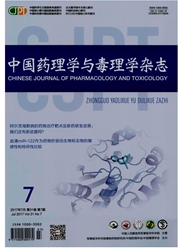

 中文摘要:
中文摘要:
自噬是细胞内物质的降解途径之一,介导长寿命蛋白和部分细胞器的降解,对维持神经元内环境稳态具有重要的生理功能。蛋白质聚集体在神经元内外的堆积是多种神经系统退行性疾病的共同病理表现。神经元轴突和树突(或统称"突起")细长,因而对蛋白质聚集和细胞内受损细胞器的堆积尤为敏感。神经系统退行性疾病发病早期,常伴随突触病变、轴突末梢变性和突起萎缩等病理现象。因此,通过自噬途径有效清除蛋白聚集物和受损细胞器,可能可以缓解神经突起的变性。然而也有研究表明,自噬不足或过度活化也将加剧神经突起损伤。本文介绍了神经突起中自噬的相关研究进展,包括神经突起中自噬的形成和运输,自噬对神经突起生长和损伤的调控,及自噬与神经系统退行性疾病中突起损伤的相关性。
 英文摘要:
英文摘要:
Autophagy,an intracellular d egradative pathway,mediates the degradation of long-lived proteins and some cellular organelles and thus plays crucial physiological role in the maintenance of neuronal homeostatsis. The intracellular and extracellular accumulation of protein aggregates is a common pathological alternation in various neurodegenerative disorders. The long and thin axons and dendrites (or collectively “neurites”) are particularly vulnerable to the accumulation of protein aggregates and damaged cellular organelles. Synaptic damage,axonal terminal degeneration,and neuritic atrophy are frequently found in the early stage of neurodegenerative diseases. Therefore, efficient clearance of protein aggregates and damaged cellular organelles by autophagic pathway may suppress neuritic degeneration. However, it is also demonstrated that insufficient autophagy or excessive autophagic activation contributes to neuritic injury. Here,the recent advances in the study of neuritic autophagy have been reviewed. We firstly introduce the biogenesis and transport of autophagosomes in neurites. Secondly,the regulatory role of autophagy in neuritic growth and damage is reviewed. Finally,the association between autophagy and neurodegenerative diseases is discussed.
 同期刊论文项目
同期刊论文项目
 同项目期刊论文
同项目期刊论文
 期刊信息
期刊信息
